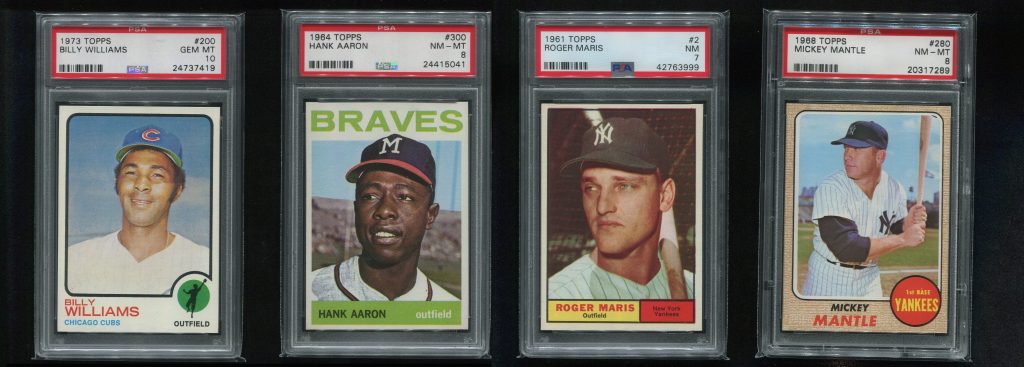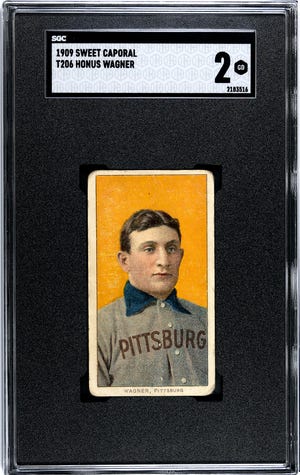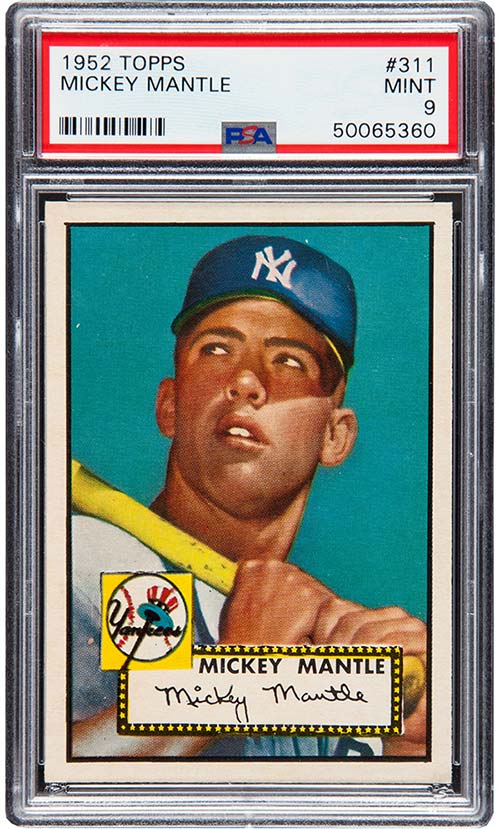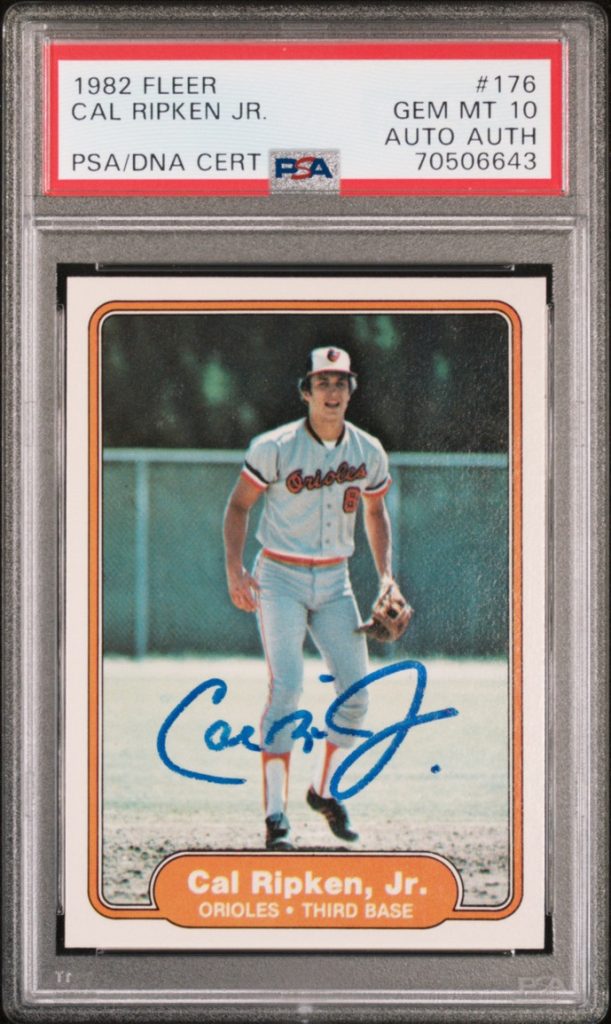Baseball cards have been a popular collectible for over a century, with avid collectors spending thousands of dollars to acquire rare and valuable cards. The history of baseball cards can be traced back to the 1860s when baseball teams began to produce trading cards featuring their players.

These early cards were crude and simple, often printed on cardboard and featuring black and white images. However, as the popularity of baseball grew, so did the demand for these cards, leading to the production of more elaborate and ornate designs.
Today, baseball cards are highly sought after by collectors around the world, with some cards selling for millions of dollars at auction. But how do you know if your collection is valuable?
In this article, we’ll explore the history of baseball cards, the desirable qualities that make a card valuable, and the all-time most valuable baseball cards. We’ll also provide tips on how to appraise your own collection, how to protect and maintain your cards, and how to buy and sell them.
Whether you’re a seasoned collector or just starting out, this guide will help you understand the worth of your baseball cards.
History of Baseball Cards
The historical evolution and origin of the popular collectibles, which have garnered significant attention from enthusiasts and collectors alike, will be explored in this section.
The first baseball cards were produced in the 1860s by cigarette and tobacco companies to promote their products. These early cards featured prominent baseball players of the time and were distributed as inserts in cigarette packs.
However, it wasn’t until the 1880s that baseball cards became more widely available to the public as standalone products.
The evolution of baseball cards continued throughout the 20th century, with companies such as Topps, Fleer, and Donruss becoming mainstays in the industry. The popularity of baseball cards soared during this time, with collectors of all ages and backgrounds seeking out rare and valuable cards to add to their collections.
In recent years, the impact of technology on baseball cards has been significant, with digital versions of cards and online marketplaces for buying and selling cards becoming increasingly prevalent. Despite these changes, the allure of the physical baseball card remains strong for many collectors.
Desirable Qualities in a Baseball Card
In evaluating a baseball card, collectors prioritize its rarity, condition, and historical significance, all of which contribute to its desirability and potential market value.
The condition grading of the card is crucial to its value, as even minor damage or wear can significantly decrease its worth. The Professional Sports Authenticator (PSA) grades cards on a scale of 1 to 10, with 10 considered pristine, untouched.

Collectors also look for rarity factors, such as limited print runs or errors in the production process, which can make a card highly sought after.
Design elements can also play a role in a card’s desirability, such as the use of vibrant colors or unique artwork.
Additionally, the player’s significance can greatly impact a card’s value, with stars and Hall of Famers commanding higher prices.
Market trends also play a role, with demand for certain players or set fluctuating over time.
Collectors need to stay informed and up-to-date on these trends to make informed decisions about buying and selling baseball cards.
The All-Time Most Valuable Baseball Cards
Rankings of the highest-priced baseball trading cards have been compiled from auction sales data and verified by experts in the field. Rarity and condition are two factors that determine a card’s value. The more rare a card is, the higher its value, and the better the condition, the more valuable it becomes. As a result, the most valuable baseball cards are rare and in excellent condition.

The most valuable baseball card of all time is the 1909-1911 T206 Honus Wagner card. This card is rare because it was pulled from circulation shortly after its release due to a dispute between Wagner and the tobacco company that produced it. Only a few dozen copies of the card exist, and those in good condition can sell for millions of dollars.
Other highly valuable cards include the 1952 Topps Mickey Mantle card, the 1916 Sporting News Babe Ruth rookie card, and vintage sets from the early 1900s. These cards are valuable because of their rarity and condition; they feature famous players and have a high investment potential.

How to Appraise Your Baseball Card Collection
Assessing the rarity and condition of your personal sports trading card selection can help determine their potential worth and investment value.
Condition grading is a crucial factor in determining the value of a baseball card collection. Cards in mint condition are more valuable than those with creases, tears, or stains. The condition of the card’s corners, edges, and centering also plays a significant role in determining its value.
Apart from condition grading, rarity factors should also be considered when appraising a baseball card collection. The rarity of a card can increase its value significantly. This can be determined by examining the year, manufacturer, and the number of cards produced.
Market trends and authentication methods should also be considered when determining a collection’s value. Pricing strategies vary depending on the condition, rarity, and market demand of the card. It is crucial to do thorough research and consult with experts before deciding on selling or buying baseball cards.
How to Protect and Maintain Your Collection
Maintaining the condition and preservation of a sports trading card selection is crucial to protecting its potential worth and investment value. Storing methods, cleaning techniques, display options, preservation tips, and handling precautions all play crucial role in safeguarding a baseball card collection.
Common storage methods include binders, top loaders, and penny sleeves, which help prevent bending and protect the cards from dust and moisture.
When cleaning baseball cards, it is essential to use gentle techniques that do not damage the card’s surface. This can involve using a soft-bristled brush or microfiber cloth to remove dirt or debris.
Depending on the owner’s preference, display options can vary from protective cases to framed displays. Additionally, preservation tips such as avoiding exposure to direct sunlight, excessive heat, or humidity can help keep the cards in optimal condition.
Finally, handling precautions like washing hands before touching the cards and using cotton gloves can prevent fingerprints and oils from damaging the card’s surface. By following these preservation techniques, collectors can ensure the longevity and worth of their baseball card collection.
Buying and Selling Baseball Cards
Having discussed the importance of protecting and maintaining your baseball card collection, it’s time to delve into the buying and selling aspect of the hobby. Trading cards have been a popular method of collecting since the late 1800s, and the vintage market for cards has only continued to grow over the years. Whether you’re a seasoned collector looking to expand your collection or a beginner looking to sell off some duplicates, understanding the grading system and online marketplaces is crucial for success.
The grading system for baseball cards is essential for buying and selling. The condition of a card greatly impacts its value, so it’s important to be able to accurately assess the condition of a card before making any purchases or sales. Companies like Professional Sports Authenticator (PSA) and Beckett Grading Services (BGS) offer professional grading services to help collectors determine the value of their cards.
In addition, online marketplaces like eBay and COMC (Check Out My Cards) provide a platform for buying and selling cards, with rare finds and sought-after cards becoming available regularly. Here are five key aspects to keep in mind when buying and selling baseball cards:
- Familiarize yourself with the grading system to accurately determine the value of a card
- Research the current market trends and values to ensure you’re making informed decisions
- Utilize online marketplaces like eBay and COMC to find rare cards and expand your collection
- Network with other collectors and attend local card shows to connect with the community and potentially find valuable cards
- Be cautious when making purchases and sales, and don’t be afraid to ask for advice or second opinions from professionals or other collectors.
Collecting Autographed Baseball Cards
The autographed baseball card collection is a popular niche within the hobby of trading cards, offering enthusiasts a unique way to connect with their favorite players and teams. Autographed authenticity is a significant factor in determining the value of a card, and collectors must be diligent in authenticating their purchases.

Some collectors prefer famous signatures, such as Babe Ruth or Mickey Mantle, while others may focus on modern players like Mike Trout or Bryce Harper. The distinction between vintage and modern autographed cards is also crucial, with some collectors preferring the nostalgia and rarity of vintage cards.
Limited editions and rare finds are also highly sought after by collectors. These special editions may feature unique designs or commemorate significant events, such as championships or record-breaking moments. Collectors may also seek out autographed cards of players who have been inducted into the Baseball Hall of Fame or have achieved other notable accomplishments.
With so many factors influencing the value of autographed baseball cards, collectors must stay informed and constantly evaluate their collections to ensure they are getting the most out of their investments.
| Limited Edition | Famous Signatures | Vintage |
|---|---|---|
| Topps Dynasty | Babe Ruth | 1955 Topps |
| Topps Tribute | Mickey Mantle | 1963 Fleer |
| Bowman Platinum | Ty Cobb | 1933 Goudey |
| Panini National Treasures | Roberto Clemente | 1915 Cracker Jack |
Table: Examples of Limited Edition, Famous Signature, and Vintage Autographed Baseball Cards
Investing in Baseball Cards
Moving on from our previous discussion on collecting autographed baseball cards, we now focus on investing in baseball cards. In recent years, baseball cards have become a popular alternative investment, with values skyrocketing for certain cards. But how do you know which cards to invest in and how to appraise their value?
To start, it’s important to understand the grading system for baseball cards. Cards are graded on a scale from 1-10, with 10 being the highest grade. Factors that affect a card’s grade include centering, corners, edges, surface, and overall condition. Market trends and rarity analysis also play a significant role in determining a card’s value.
Investing in baseball cards requires a deep understanding of the industry and a willingness to take risks. Here are some investment strategies to consider when looking to invest in baseball cards:
- Focus on vintage cards from the 1950s-1970s, as they tend to hold their value well and have a strong collector base.
- Look for cards featuring players who have had a significant impact on the game and have a strong fan following.
- Consider investing in graded cards, as they have been authenticated and evaluated by a third-party grading service.
- Keep an eye on market trends and stay informed about the latest news and developments in the industry.
Overall, investing in baseball cards requires knowledge, research, and intuition. By understanding the grading system, market trends, and investment strategies, you can make informed decisions when appraising and investing in your baseball card collection.
Frequently Asked Questions
What is some common mistakes collectors make when appraising their baseball card collection?
When appraising a baseball card collection, collectors often make common mistakes that can lead to inaccurate valuations. One mistake is not adhering to condition standards, which can significantly impact a card’s value.
Additionally, failing to keep up with current market trends and relying solely on outdated pricing guides can also result in incorrect appraisals. Expert opinions should also be considered, as they can provide valuable insights into the value of a collection.
However, it’s important to note that sentimental value should not be a determining factor in appraising a collection, as it does not necessarily reflect the true market value.
By avoiding these common mistakes and taking a detailed, analytical approach to appraising a baseball card collection, collectors can ensure accurate valuations.
And if you have baseball cards to sell in Goshen, Indiana, be sure to contact ibuy.cards for assistance in appraising and selling your collection.
How do you determine the authenticity of a baseball card?
Determining the authenticity of a baseball card involves several commonly used methods.
One of these methods is watermark detection, which involves examining the card’s texture and markings to identify any irregularities that may indicate forgery.
Another method is hologram authentication, where a special sticker or hologram is placed on the card to verify its authenticity.
Expert opinion is also sought after, where experienced collectors or appraisers are brought in to examine the card and provide an opinion on its authenticity.
Printing techniques are also scrutinized, with experts looking for any inconsistencies or anomalies that may suggest the card is fake.
Finally, card age analysis is used to determine the age of the card, with older cards being more valuable and sought after.
These various methods are crucial in determining the authenticity of a baseball card, ensuring that collectors and buyers get the real deal.
Can a baseball card lose value if it is not stored properly?
Storage consequences of baseball cards are not to be taken lightly, as the preservation methods can significantly impact their value over time. Environmental factors, such as temperature and humidity fluctuations, can cause damage to the card’s condition and ultimately lower its worth.
Proper storage techniques, such as using acid-free materials and keeping the cards in a cool, dry place, are critical to maintaining their integrity. If not stored correctly, the card’s corners can become bent or creased, the ink can smudge, and the card can even develop mold.
These storage consequences can have a significant market impact, as collectors will typically only pay top dollar for cards in excellent condition. Therefore, it is essential to consider preservation methods when storing your baseball card collection to ensure its long-term value.
What is the most valuable misprint or error on a baseball card?
Printing errors and rare variations on baseball cards have become some of the most sought-after items for collectors. These errors could range from a simple misprint to a complete omission of a player’s name.
The most valuable misprint or error on a baseball card is the 1952 Topps Mickey Mantle card, which was printed with a slight color overhang on the edges, making it a rare variation. This card is now one of the most expensive baseball cards ever sold, with a record-breaking auction price of $5.2 million in 2021.
Collector demand for cards with printing errors and rare variations has significantly increased over the years, especially for iconic players like Babe Ruth and Hank Aaron. Therefore, identifying these errors and variations could significantly increase the value of your baseball card collection.
How do you know if you should sell or hold onto a valuable baseball card?
When deciding whether to sell or hold onto a valuable baseball card, there are several factors to consider.
Market trends can play a significant role, as you may want to sell during a market boom to maximize profits. However, investment strategies also come into play, as timing is crucial when selling.
Balancing rarity and condition is another important consideration, as collectors may prioritize one over the other. Historical significance can also affect a decision to sell, as cards connected to iconic moments or players may hold sentimental value.
Emotional attachment is another factor that may sway a decision, as collectors may struggle to part with cards that hold personal significance. Ultimately, the decision to sell or hold onto a valuable baseball card should be carefully weighed and considered based on various factors.
Conclusion
In conclusion, the value of baseball cards is determined by various factors, including rarity, age, condition, and demand. Understanding the history of baseball cards and the qualities that make them desirable is essential for appraising your own collection.
By researching the most valuable cards of all time and staying up-to-date on market trends, collectors can better understand the worth of their collections.
It is also important for collectors to take steps to protect and maintain their collections, such as storing them in acid-free sleeves or binders and avoiding exposure to sunlight and moisture.
Whether buying or selling cards, it is crucial to work with reputable dealers and to be aware of current market values.
For those interested in collecting autographed cards or investing in baseball cards, thorough research and careful consideration are key to making informed decisions.
Overall, with a combination of knowledge and care, baseball card collecting can be a rewarding and profitable hobby.
